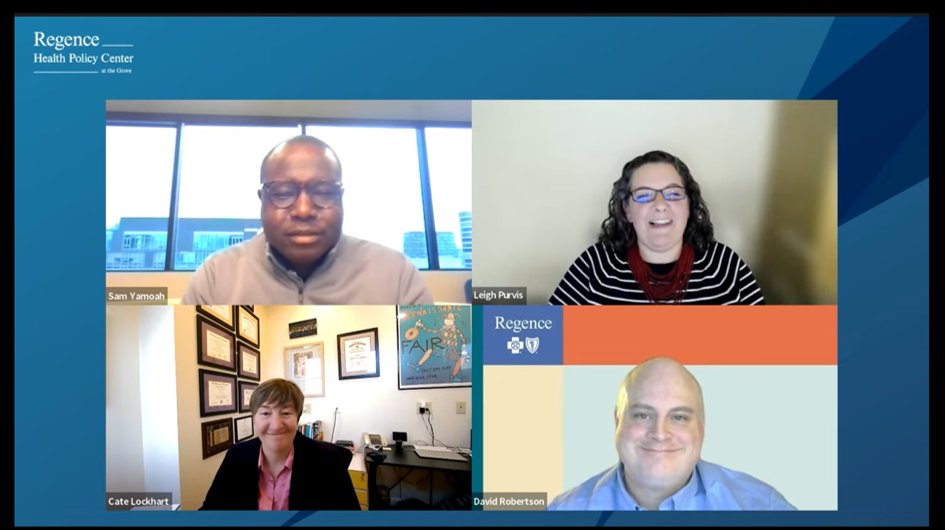Improving Drug Affordability: The Promise of Biosimilars

Visit our YouTube channel to view the recording of the full conversation.
The first biosimilars were approved for use in the United States in 2015. With a growing number of biosimilars available on the market and a need to decrease the costs associated with prescription drugs, are biosimilars on track to deliver the savings promised?
On November 29, Regence Health Policy Center hosted a panel discussion with moderator Sam Yamoah, SVP & Chief Strategy Officer, Cambia Health Solutions, and panelists Cate Lockhart, Executive Director, Biologics and Biosimilars Collective Intelligence Consortium, Leigh Purvis, Director of Health Care Costs & Access, AARP Public Policy Institute, and David Robertson, VP of Clinical Pharmacy, Regence BlueCross BlueShield, to discuss the opportunity biosimilars hold to lower costs for members and improve access to these life-changing treatments. Additionally, the speakers highlighted barriers that still need to be addressed including education and buy-in from both patients and providers, streamlining the FDA approval process, and ensuring an environment that supports product competition to ultimately drive down costs.
Biosimilars are safe and effective alternatives- Most people are not aware of the number of biologic products are available on the market or how these drugs contribute to drug spending. Additionally, patients taking these drugs are often not aware there may be an alternative or are understandably hesitant to switch to a new product, despite the potential for cost savings. Focused education for patients is critical to their buy-in and willingness to switch to a biosimilar. Since providers are the ones ultimately prescribing these drugs, providers need to be comfortable with the scientific data supporting biosimilars’ safety and efficacy studies. Europe rolled out a successful education campaign to help provide evidence-based education. Something similar by the FDA could be useful for the United States to promote the fact that biosimilars are deemed as clinically safe and effective as the originator products.
Biosimilar adoption is reliant on the removal of unnecessary barriers- In order to be an FDA-approved biosimilar, the manufacturer must demonstrate the drug is as clinically effective and safe as the originator. The interchangeability designation is an additional measure requiring extra studies and extra costs to further demonstrate safety and efficacy. Interchangeability gives a misconception that a biosimilar carrying this designation is superior to a biosimilar that does not carry this designation. Interchangeability is only significant when it comes to a pharmacists’ ability to substitute a biosimilar for an originator product. States have differing regulation around product substitution and provider notification based upon a product carrying this designation. Europe does not use a system like this one so all biosimilars are able to be substituted, thus improving competition between products and fostering greater utilization.
Biosimilars introduce competition to the market- By the end of this decade, close to 55 biologics will come off patent. As greater numbers of biosimilars are introduced to the market, price competition should drive the cost for these drugs down resulting in savings for patients, health systems, and health plans. Legislators are looking at ways to continue to foster competition and reduce anti-competitive tactics such as eliminating patent-exclusivity extensions and patent gaming. Additionally, legislators and regulators should continue to examine the substitution process for biosimilars to work toward a more streamlined system that more closely resembles that used for substitution of generic drugs.

